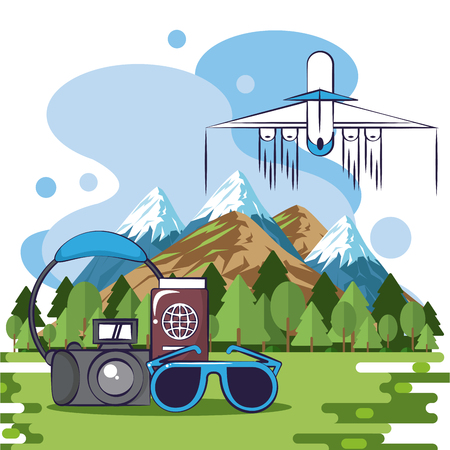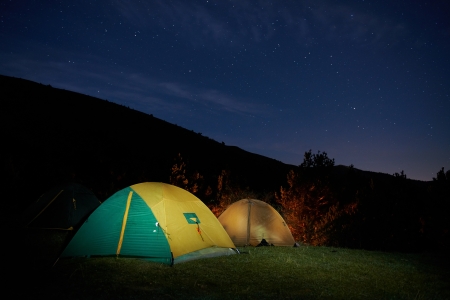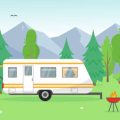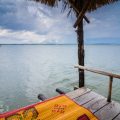Understanding Different Types of Campsites
Before you book your first campsite online, its important to know the different types of campsites available across the U.S. Each type offers a unique experience, and choosing the right one can make a big difference for your first trip. Heres a simple breakdown to help you decide:
National Parks
National parks are managed by the National Park Service and are known for their stunning natural beauty and iconic landscapes like Yellowstone or Yosemite. Campsites here often fill up quickly, especially during peak season, so early reservations are key. Facilities can range from basic to modern, depending on the park.
State Parks
State parks are run by individual states and offer great camping experiences that are often less crowded than national parks. They usually have well-maintained campgrounds with amenities like restrooms, picnic tables, and fire rings. State parks are ideal for families and beginner campers.
Private Campgrounds
Private campgrounds, such as those run by KOA or other independent owners, typically offer more conveniences. These might include full hookups for RVs, showers, Wi-Fi, and even small stores or game rooms. They’re a great option if youre looking for comfort and extra services.
Dispersed Camping
Dispersed camping means camping outside of designated campgrounds, usually on public land managed by agencies like the Bureau of Land Management (BLM) or the U.S. Forest Service. It’s free and offers solitude, but there are no facilities—so it’s best left to experienced campers who follow Leave No Trace principles.
Campsite Type Comparison
| Campsite Type | Managed By | Amenities | Best For | Reservation Needed? |
|---|---|---|---|---|
| National Parks | National Park Service | Basic to modern (varies) | Sightseeing & nature lovers | Yes, often months in advance |
| State Parks | Individual States | Restrooms, tables, fire rings | Families & beginners | Yes, recommended |
| Private Campgrounds | Private Owners/Companies | Full amenities & extras | Comfort seekers & RV users | Yes |
| Dispersed Camping | Bureau of Land Management/USFS | No amenities | Experienced campers & adventurers | No (first-come-first-served) |
Understanding these options will help you pick the right campsite that fits your comfort level and adventure goals. Whether you want all the comforts or prefer a more rugged experience, theres something out there for everyone.
2. Choosing the Right Campsite for Your Needs
Picking the right campsite is key to having a great first camping experience. With so many options online, it can feel overwhelming—but don’t worry! Let’s break it down into simple things to look for so you can book a spot that fits your style, comfort level, and what you’re hoping to get out of your trip.
Location Matters
Think about how far youre willing to travel. Do you want something close to home for a quick weekend getaway, or are you up for a longer road trip? Also, consider the climate—camping in the mountains will be very different from camping near the beach or desert.
Common Location Types:
| Type | Description | Best For |
|---|---|---|
| National Parks | Scenic beauty, wildlife, and hiking trails | Nature lovers and hikers |
| State Parks | Well-maintained with basic amenities | Families and beginners |
| Private Campgrounds | More amenities like pools and Wi-Fi | Comfort seekers and RV campers |
| Backcountry Sites | Remote locations with minimal facilities | Experienced campers seeking solitude |
Amenities: Know What You Need
Campsites range from rustic to almost luxurious. Decide ahead of time what kind of comforts you want. Some questions to ask yourself:
- Do I need access to restrooms or showers?
- Is electricity important for my gear?
- Will I be cooking? Is there a fire ring or grill?
- Am I bringing an RV that needs hook-ups?
Terrain and Campsite Type
The ground beneath your tent matters more than you’d think. Rocky, sloped, or muddy ground can make for an uncomfortable night. Check site descriptions or photos when booking online to see what kind of surface youll be sleeping on.
Campsite Surface Types:
| Surface Type | Pros | Cons |
|---|---|---|
| Grass/Dirt | Softer ground, easy to stake tents | Muddy when wet |
| Gravel Pad | Good drainage, stable base for tents or RVs | Tougher on tent floors without padding |
| Paved/Concrete Slab | Iideal for RV parking and clean setup area | No staking possible, not ideal for tents |
Activities Nearby
If youre hoping to hike, fish, swim, or just relax by a lake, make sure your campground offers those activities—or is close to places that do. Campground websites often list nearby attractions, but you can also check reviews from other campers to get real-life feedback.
A Few Things to Double-Check Before Booking:
- Pets: Are dogs allowed? Are there leash rules?
- Noisy neighbors: Look for “quiet hours” policies if you’re looking for peace and quiet.
- Kid-friendly: Some sites have playgrounds or ranger-led programs perfect for families.
- Accessibility: If anyone in your group has mobility needs, check if the site is ADA-compliant.
The best campsite is one that matches your expectations. Whether youre looking for a rugged adventure or a comfortable place to unwind under the stars, taking time to understand what each site offers will help ensure your first camping trip goes smoothly.

3. Best Platforms for Booking Campsites Online
When it comes to booking your first campsite online, choosing the right platform can make a big difference. In the U.S., there are several trusted websites and apps that campers rely on to find and reserve campsites easily. Here’s a look at some of the most popular options and how to use them effectively.
Top Camping Reservation Platforms
| Platform | Best For | Key Features |
|---|---|---|
| Recreation.gov | National Parks, Forests, and Public Lands | – Book federal campsites – View real-time availability – Offers mobile app for easy booking |
| Hipcamp | Unique stays on private land | – Glamping, RV spots, tent camping – User reviews and photos – Filters for pet-friendly and amenities |
| KOA (Kampgrounds of America) | Family-friendly campgrounds with amenities | – Consistent quality standards – Loyalty rewards program – Cabins, RV sites, and tent sites available |
How to Use These Platforms Effectively
#1: Plan Ahead
Campsites at popular destinations can book up months in advance—especially during summer or holiday weekends. Start looking as early as possible and be flexible with your dates if you can.
#2: Use Filters Wisely
Narrow your search using filters like “pet-friendly,” “RV hookups,” or “fire rings” to find a site that fits your needs. Both Hipcamp and KOA offer great filtering tools to help you quickly find what you’re looking for.
#3: Read Reviews and Check Photos
User reviews give honest insights about the campground’s condition, noise levels, cleanliness, and more. Photos also help you visualize the site before booking—super helpful for first-timers!
#4: Sign Up for Alerts or Waitlists
If your desired site is booked, some platforms (like Recreation.gov) let you join a waitlist or sign up for cancellation alerts. Don’t give up right away—you might still get in!
4. When to Book: Timing and Availability Tips
If youre new to camping, one of the biggest surprises might be how fast campsites get booked—especially at popular national parks or during holiday weekends. Understanding when to book can make the difference between scoring your dream spot and settling for whatevers left.
Know the Seasons
Most campgrounds in the U.S. have peak seasons, usually from late spring through early fall. Summer (June to August) is especially busy due to school vacations and warmer weather. If youre planning a trip during these months, you’ll need to plan ahead.
Understand Booking Windows
Many public campgrounds, like those in national or state parks, open reservations six months in advance. That means if you want a site for July 4th weekend, you may need to be online right when the reservation window opens in January.
Typical Booking Windows by Type
| Campground Type | Booking Window |
|---|---|
| National Parks (e.g., Yosemite, Yellowstone) | Up to 6 months in advance |
| State Parks | 4–12 months depending on the state |
| Private Campgrounds (KOA, Hipcamp, etc.) | Varies – often open year-round |
| First-Come, First-Served Sites | No reservations – arrive early day-of |
Book Early for Peak Times
If youre eyeing a campsite for a summer holiday like Memorial Day, Fourth of July, or Labor Day weekend, set a reminder and book as soon as that window opens. These dates are extremely popular and sites can sell out within minutes.
Consider Shoulder Seasons
If your schedule is flexible, try camping in the spring (April–May) or fall (September–October). You’ll enjoy fewer crowds, easier booking options, and cooler temperatures—perfect for hiking and relaxing by the fire.
Use Alerts and Tools
Some websites offer tools that alert you when cancellations happen or a site becomes available. For example:
Helpful Tools for Campsite Availability
- Campsite Assist: Sends notifications when spots open up at sold-out campgrounds.
- Campnab: Monitors parks for cancellations and alerts you.
- The Dyrt Pro: Offers offline maps and lists availability at private and public sites.
The key takeaway? Planning ahead is crucial. The earlier you know your travel dates and destination, the better your chances of snagging a great spot—especially during high-demand periods like summer weekends or national holidays.
5. Essential Info to Look for Before You Book
Before hitting that “Reserve” button on a campsite booking website, its important to understand all the key details that can make or break your camping experience. Heres what you should look for when browsing listings online:
Campsite Size and Layout
Not all campsites are created equal. Some are spacious and ideal for large tents or RVs, while others are better suited for a small tent or car camping. Pay attention to the sites dimensions and how many people or vehicles it allows.
| Feature | What to Look For |
|---|---|
| Site Dimensions | Check length and width if youre using a large tent or RV. |
| Max Occupancy | Make sure it fits your group size (people & vehicles). |
| Tent Pads | Look for flat, designated spaces for your tent. |
Access Type
How you get to the site matters. Some are drive-in, others require a short hike. If youre bringing a lot of gear or traveling with kids, youll want easy access.
- Drive-In: Park right at your campsite—great for convenience.
- Walk-In: A short walk from parking area; typically more private.
- Backcountry/Hike-In: Requires hiking in with all your gear—best for experienced campers.
Pet Policies
If youre bringing your furry friend, always check the campground’s pet rules. Some sites allow pets with restrictions, while others may prohibit them altogether.
- Allowed: Pets welcome but usually must be leashed.
- No Pets: Some parks don’t allow animals due to wildlife protection.
- Fees & Rules: There may be extra fees or specific leash length requirements.
Fire Regulations
Campfires are part of the classic camping experience, but fire rules vary depending on location and season. Always double-check whats allowed before you go.
| Fire Option | Description |
|---|---|
| Fire Ring Provided | You can build a campfire in a designated ring or pit. |
| No Open Fires | You’ll need to use a camp stove; no wood fires allowed. |
| Bans in Effect | Some areas have seasonal fire bans—check alerts before booking. |
User Reviews and Ratings
This is one of the most helpful tools when choosing a campsite. Real campers leave insights about noise levels, cleanliness, shade, privacy, cell service, and more. Don’t skip this step!
- Look for recent reviews: Conditions change—recent feedback is most reliable.
- Check photos: Users often upload real pictures that give you a better idea than official ones.
- Avoid red flags: Consistent complaints about bugs, trash, or loud neighbors are worth noting.
A Quick Checklist Before You Book:
- Campsite size fits your group and gear?
- Easy access based on your travel style?
- Pets allowed if youre bringing one?
- Fires permitted during your visit?
- User reviews positive and helpful?
The more informed you are going in, the better your camping trip will be. Take time to read through the listing details carefully so there won’t be any surprises once you arrive at the campground.
6. First-Time Camper Mistakes to Avoid
Booking your first campsite online is exciting, but it’s easy to make a few rookie mistakes that could impact your entire trip. Here are some common pitfalls to steer clear of when reserving your spot in the great outdoors.
Don’t Wait Until the Last Minute
Campsites—especially popular ones in national parks or near major attractions—can book up months in advance. If you wait too long, you may find yourself with limited options or none at all. Planning ahead gives you more flexibility and ensures you get a site that fits your needs.
Always Check Site Photos and Descriptions
Not all campsites are created equal. Some may be close to bathrooms or playgrounds (great if you have kids), while others may be too close to busy roads or lack shade. Reviewing photos and reading descriptions can help you avoid surprises like a sloped tent area or no fire ring.
What to Look for in Site Photos
| Feature | Why It Matters |
|---|---|
| Tent Pad or RV Hookups | Ensures compatibility with your gear |
| Shade/Trees | Keeps your site cool during hot days |
| Distance from Other Sites | More privacy and less noise |
| Flat Ground | Easier sleeping and setup |
| Amenities Visible (picnic table, fire ring) | Know what’s included before arriving |
Read the Campground Rules Carefully
Every campground has its own set of rules—some don’t allow pets, others have quiet hours or restrictions on fires during dry seasons. Ignoring these details can lead to fines or even being asked to leave. Always check for:
- Check-in/check-out times
- Pet policies
- Firewood restrictions (some places don’t allow outside wood)
- No-alcohol zones
- Vehicle limits per site
Avoid Overestimating Your Camping Skills
If it’s your first time camping, keep things simple. Choose a site close to amenities like restrooms, water stations, and ranger stations. Avoid remote backcountry sites unless youre experienced and fully prepared.
Make Sure You Understand the Cancellation Policy
Life happens—weather changes, plans shift. Before booking, check the cancellation policy so you know if youll get a refund or credit if something comes up. Some campgrounds are flexible; others aren’t.
Quick Tips Recap:
- Book Early: Especially for weekends and holidays.
- Review Photos: Don’t go in blind—know what to expect.
- Understand the Rules: Stay informed and respectful.
- Simplify Your First Trip: Choose convenience over adventure at first.
- Know the Cancellation Terms: Protect your wallet just in case.
Avoiding these common mistakes will help ensure your first camping experience is smooth, fun, and stress-free!


